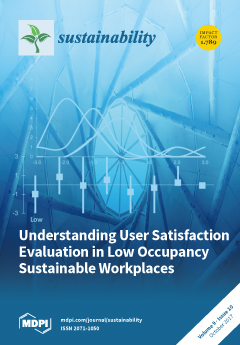Agricultural ecosystems are important contributors to atmospheric greenhouse gasses (GHGs); however, in situ winter emission data in saline-alkali fields are scarce. Gas samples were collected during different periods, from three rice (R1–R3) and three maize (M1–M3) fields with different soil pH levels and
[...] Read more.
Agricultural ecosystems are important contributors to atmospheric greenhouse gasses (GHGs); however, in situ winter emission data in saline-alkali fields are scarce. Gas samples were collected during different periods, from three rice (R1–R3) and three maize (M1–M3) fields with different soil pH levels and salinity conditions. Carbon dioxide (CO
2) emissions in the rice and maize fields decreased with decreasing temperature during the freezing period and increased with the rising temperature during the thawing period, with the majority of winter CO
2 emissions occurring during these two periods. Peaks in methane (CH
4) emissions were observed during the freezing period in the rice fields and during the snow-melting period in the rice and maize fields. CH
4 emissions in the rice fields and CH
4 uptake rates in the maize fields were significantly (
P < 0.05) related to surface soil temperature. Nitrous oxide (N
2O) emissions remained relatively low, except for during the peaks observed during the snow-melting period in both the rice and maize fields, leading to the high GHG contribution of the snow-melting period throughout the winter. Higher pH and salinity conditions consistently resulted in lower CO
2, CH
4, and N
2O emissions, CH
4 uptake, and lower global warming potential (GWP). These results can contribute to the assessment of the GWP during winter in saline-alkali regions.
Full article





